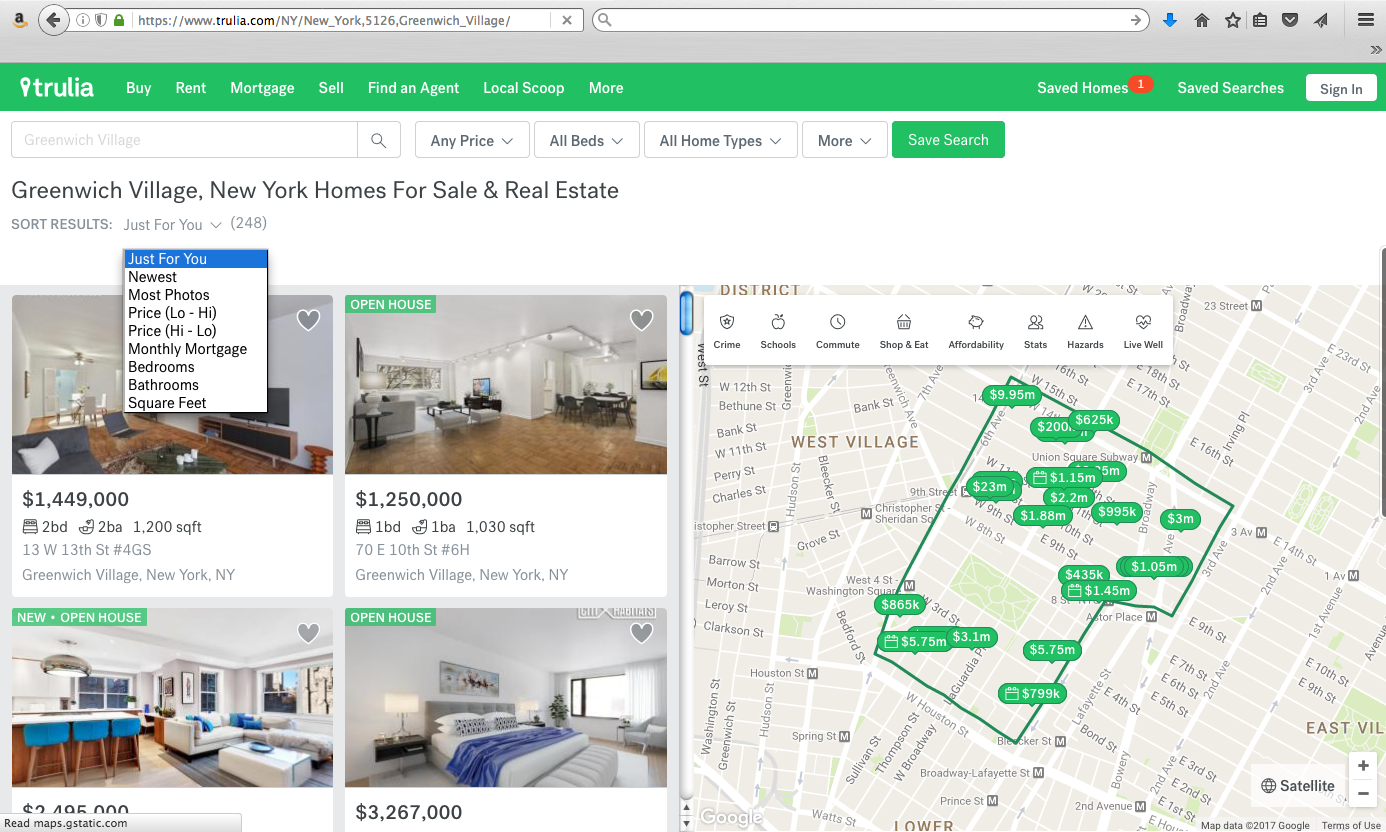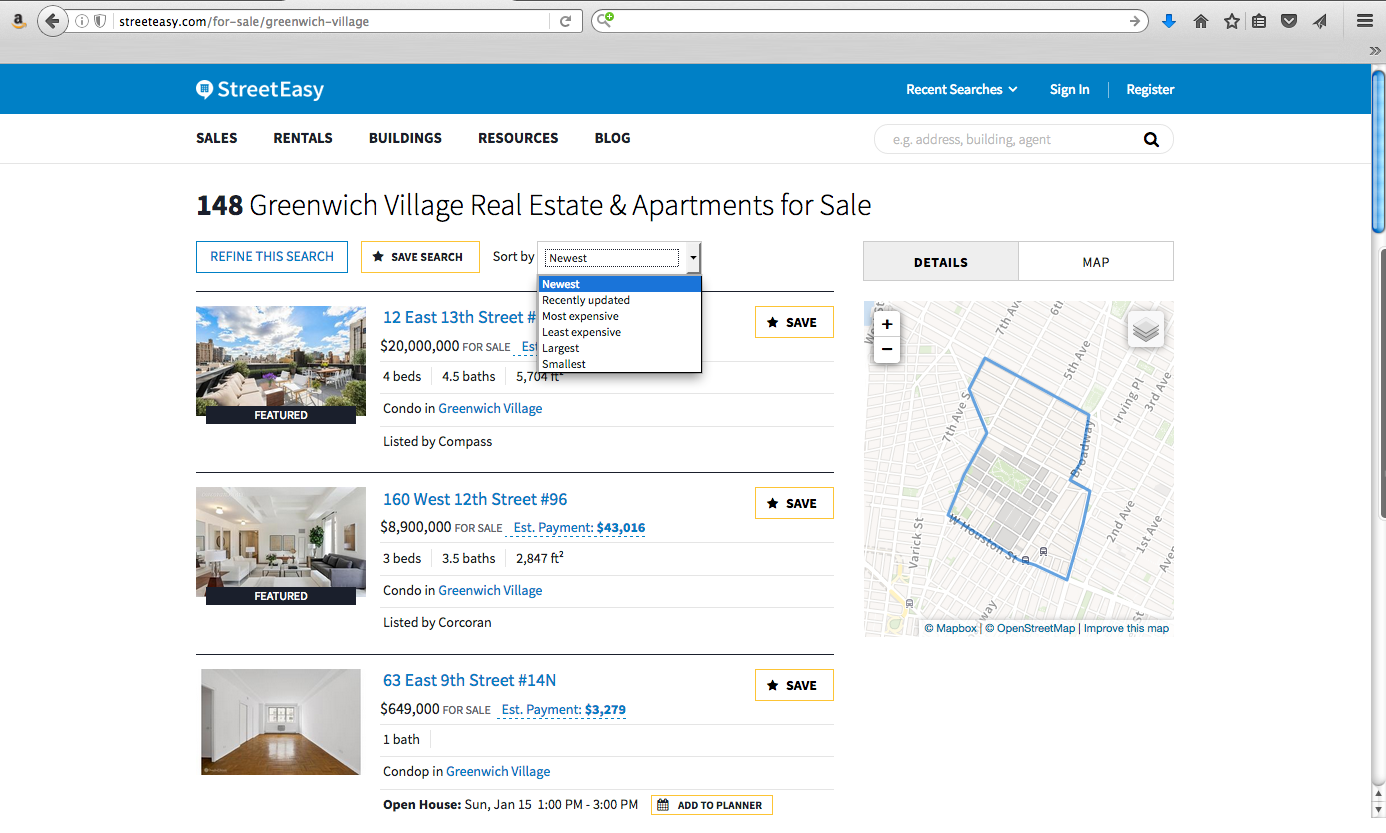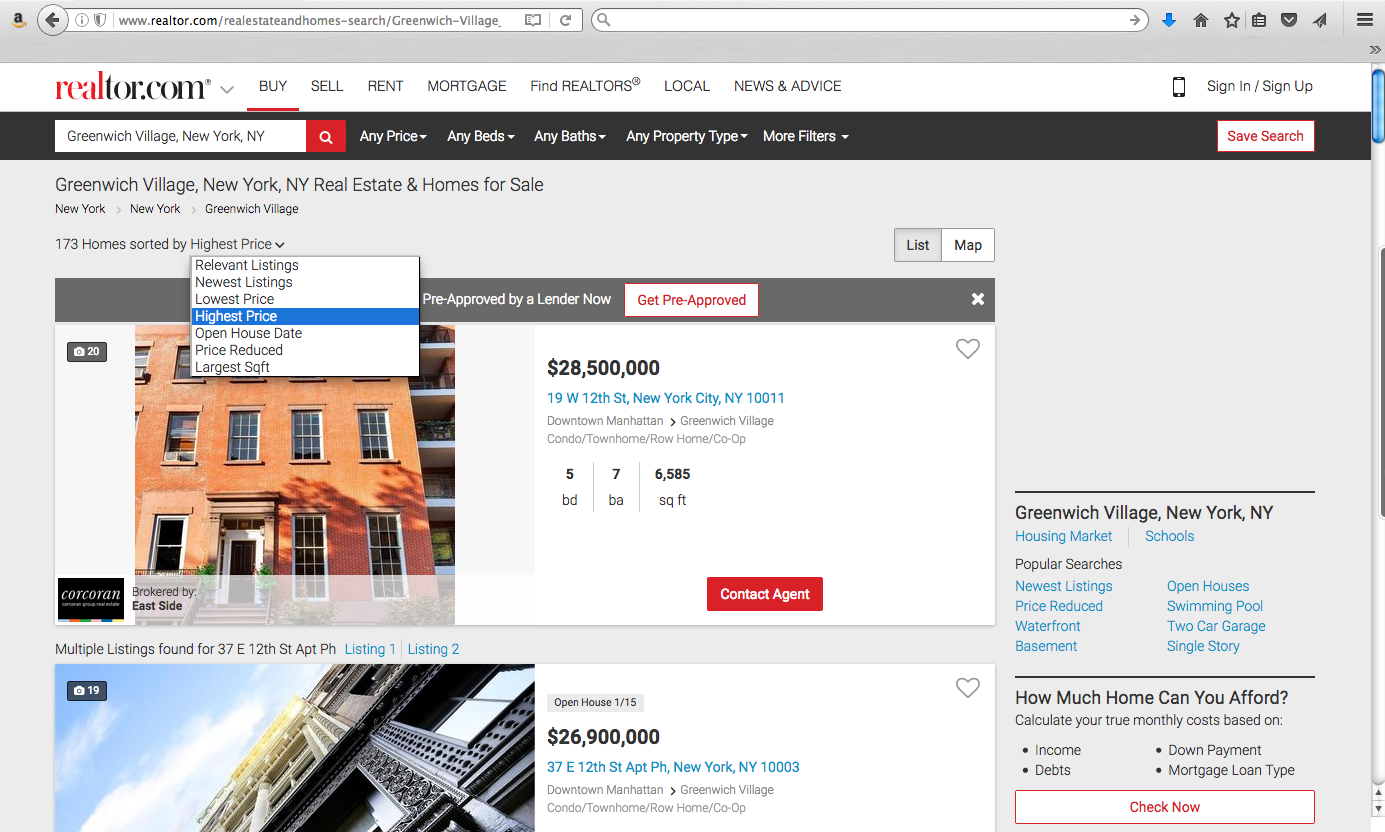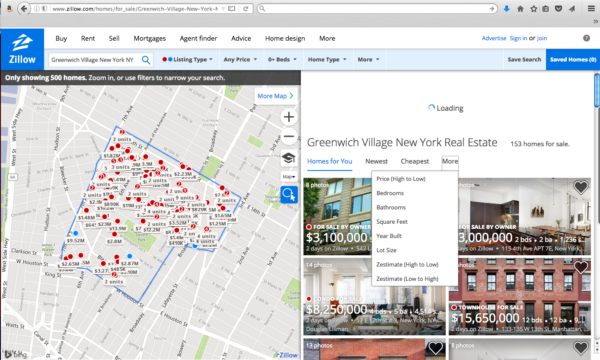My friend and colleague Constantine Valhouli, founder of NeighborhoodX pens an excellent piece on how the analytics that can be derived from raw data separates seemingly similar real estate resources. And he loves price per square foot. I serve as an advisor to his firm as well as a co-consumer of caffeine whenever possible. He may periodically drop in here on Matrix with some insights derived from his neighborhood analytics.
-Jonathan J. Miller
____________________
With Data As A Commodity, Interpretation Becomes The Differentiator
When data becomes a commodity, context, and analysis for that data become a critical point of differentiation. This is particularly true for real estate data.
The major real estate portals active in New York City – Realtor, StreetEasy, Trulia, and Zillow – are all relying on the same underlying data: listings from real estate brokerage firms, multiple listing systems and public record. As a result, what differentiates one portal from another is the user experience. This UX is a combination of the (hopefully) intuitive site navigation and the contextual information that helps users make more informed decisions about the various listings.
Those three factors – listings, navigation, and contextual information – come together in the search functions on a real estate portal.
Why? Even as the web has streamlined the housing search, it remains cumbersome. We’ve previously analyzed how the same search on different portals will yield different number of listings for the same neighborhood (Austin, Boston, NYC) – which means that buyers will have to duplicate their search across several portals to be sure they are finding all the relevant properties. Other times, the listings aren’t actually in the neighborhood they claim to be. All of this puts the burden of analysis onto the site user.
The real estate search recently became even more cumbersome and opaque. The major real estate portals which are active in New York City no longer have an option to sort properties by price per square foot.
On these portals, users can search by most or least expensive, by largest or smallest, or by newest – but these metrics are not as useful as looking at price per square foot. Sometimes a large property that appears expensive can be a bargain on a per-square-foot basis. Other times, some of the least expensive properties in a neighborhood are asking the highest prices per square foot for that neighborhood.
The ability to sort listings by price per square foot is a minor feature, and relatively easy to implement. But the omission speaks volumes. Without this option, it is no longer possible for consumers to quickly sort properties to get a better sense the price/sq.ft. range in a neighborhood. Or to know whether a particular property is asking too much (or is a relative bargain) compared to the neighborhood. This also means that it is harder for sellers to value their property accurately.







Comments are closed.